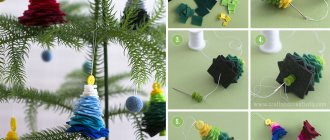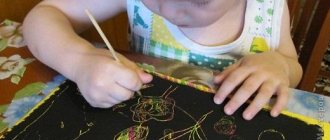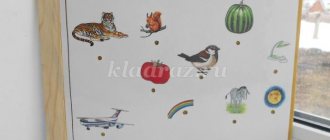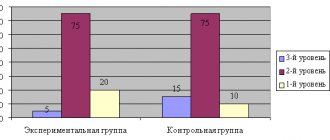How games are played in kindergarten
The required minimum competence of a teacher is the ability to distinguish didactic games in preschool age from other game forms. The teacher should know:
- structuring;
- varieties;
- database file cabinet;
- regulatory standards.
When using play techniques, the kindergarten teacher must remember that during play the child satisfies his basic needs, and masters activities, work and study. The baby grows as an individual, based on which it is very important to properly organize the game process, approach the matter with full responsibility, relying on the basis of pedagogy.
Kids are playing
Goals and objectives in different periods of childhood
It was revealed that didactic games (DI) for preschoolers solve the following learning tasks:
- learning and understanding new knowledge;
- improving mental skills;
- application of knowledge in different situations;
- formation and progress of a child’s speech in a preschool educational institution.
DI can act:
- as an organizational and training form;
- methods of education and consolidation of knowledge;
- a means of educating morality and human will.
For your information! Play action is of particular importance; its purpose is to create a play situation and mutual relationships between playing children. If it is missing, it is no longer a game, but a conversation or a didactic exercise.
Classification of didactic games of preschool educational institutions
In terms of content, DI can have different subject areas:
- the world;
- development of the speech apparatus;
- linguistics;
- mathematical knowledge;
- LIFE SAFETY FUNDAMENTALS.
Any activity can be performed in this form. Integrated activities are more successful and efficient.
Math game
Based on the material used, educators subdivide DI:
- with objects;
- desktop-printed;
- verbal.
Each type has its own characteristics.
Contents and selection of items for the game
The games vary in content and materials. In kindergartens, DI is used:
- With objects. The objects in them are educational material. Anything can be used: toys, natural materials, household items, crafts. The creative approach of the teacher makes it possible to organize a gaming event, using unique store-bought toys, innovative game complexes and any items available at home, even those that are usually thrown away or that are lying underfoot. Options for games with objects are dramatizations, plots, and interactive games with toys that develop motor skills (pyramids, nesting dolls, cubes). Learning by playing with objects primarily develops thinking. The child learns to analyze, look for commonality in things and distinguish them, and masters the skills of using objects of various types. By playing with objects, kids broaden their horizons, learn about self-control of behavior and concentration. Actions improve memory and have a positive effect on the functioning of the cerebellum.
- Desktop-printed. These DIs solve critical learning problems. They improve their horizons and show the child the world around them, systematize the knowledge that the baby has, develop thinking, logical perception, attention, and imagination. In this category, games based on a pair of cards, which are distributed according to learning objectives and complexity, are more relevant.
- Dictionary. They are characterized by the fact that solving the problem of teaching a preschooler proceeds as a thinking process. While playing, a participant in the game can fantasize, using knowledge without the help of game material, not visually. Among this type of DI there are many well-known proverbs, riddles, and jokes. The teacher can use poems and short excerpts from books.
Catchy songs for kids to make dancing fun
For your information! Thanks to the gameplay, it is possible to develop children of the junior, middle and senior groups.
Examples of do-it-yourself didactic games for preschoolers
Math games
Didactic math games for preschoolers not only develop counting skills and deepen knowledge of geometric shapes, but also help develop logic and abstract thinking. For example, you can help your child perform arithmetic operations. During the game, an adult and a child throw a ball to each other. When throwing, an adult names a basic arithmetic example (for example, 5-3). The child throws the ball back and names the correct number.
Another didactic game, which you can create with your own hands literally from waste material, can teach children to correctly compose various geometric shapes and analyze them. For such a game you will need several thick threads 20-25 centimeters long or a couple of dozen counting sticks. It is necessary to offer the child various tasks. For example, make identical figures of different sizes, make a rectangle from a certain number of sticks, make geometric shapes in a certain order.
Game “Sport is our friend!”
This game will help develop a child's understanding of the importance of maintaining their own health, and will also contribute to the development of physical qualities and good character traits of the child. With the help of the game “Sport is our friend” you can develop your child’s fine motor skills, visual memory, creative thinking and broaden the horizons of a preschooler.
To play the game, you need to select several black and white drawings (they can be easily found on the Internet and printed on a printer), which depict various sports, as well as objects related to a particular sport. An adult names a specific sport for the child, and the child must choose the right picture and color the black and white image.
At the end of the game, you can prepare a mosaic puzzle by cutting one of the pictures into different parts, and invite the child to reassemble the picture. During such activities, the child develops logical thinking. When the picture is ready, you and your child can compose a short story based on the plot of the picture.
Game "Collect beads"
The purpose of this game is to develop coordination, create an emotional relationship with the fruits of their labor, and it also teaches the child to group objects by color. To create the game “Collect Beads” you will need rings and strings of certain colors.
An adult shows several dolls that need decorations for the holiday. Some of them have beads, but other dolls didn't have enough. So that they don’t get upset, you need to make beads for the remaining dolls yourself. The adult invites the child to collect rings of the desired color on each of the strings and put the finished beads on the dolls.
We hope that the examples we have given will help you create other educational games with your own hands for preschoolers. When creating your own educational games, take into account the abilities and needs of the children for whom they are intended. Such games will bring invaluable benefits and can play a key role in the intellectual development of children.
Homemade DI for preschoolers of different ages
Kindergarten teachers, and mothers and fathers at home, can do a lot for their pupils. Do-it-yourself games for speech development in the middle group are no exception.
Homemade game
The goal of the classes is to ensure that the child becomes creative, able to fantasize, invent, and explain ideas. In addition, DI for preschoolers, made independently, helps to develop skills and various knowledge about the planet and environment. Also help:
- improve their ability to present consistently and coherently;
- expand your vocabulary;
- develop the thought process, memory, attentiveness;
- socially adapt.
Games have a good effect on motor skills and tactile perception.
Creating educational games yourself
You can make games yourself at home with your child. DIY activities for preschoolers can be associated, for example, with various unusual crafts. In decorations that the child will make himself, different materials are used:
- colored buttons;
- small stones;
- tubes of different lengths;
- beads;
- shells;
- cones;
- counting sticks;
- chips;
- laces;
- wire.
Looking at the material prepared independently, the child will choose to string it on a wire and make various decorations. Such games develop manual dexterity and strength, motor skills, coordination, and creativity. You can make musical accompaniment and prepare for the New Year holidays. Today, many templates and crafts for young and older children are sold.
DI for preschoolers
DIs last approximately 10-20 minutes. It is important that during this period the mental functioning of the participants does not decrease; the children find it interesting.
Important! Security must be created. This is especially important to watch out for in group events.
You cannot allow one child to be busy solving a problem while the others do nothing. A different situation is observed if the same task is assigned to all participants: they must carefully see and remember where the toys are on the table, then the teacher closes the objects or asks the participants to close their eyes and confuses the places of the objects. Players should notice the changes.
Cooperative games
Features and differences
Different age groups must be led with distinctive characteristics. In nursery groups, after the first year of life, the teacher himself tells the rules, participates, feels the object, and gives a description of the picture from the card index. It’s easy to play with younger children, you can:
- roll colored balls into hoops;
- lay out and assemble nesting dolls and pyramids;
- distinguish by voice who called “bunny”;
- pull things out of the “magic bag”.
For your information! The baby is not interested in the result of the game, he is attracted by the action itself: kicking, cleaning, carrying.
Patriotic education of preschool children
For older preschoolers, the action of the game should establish the most complex relationships between the players. The game usually involves playing a specific role. Absolute independence is required here.
The senior DI group (mainly for adult students) involves a competitive process: whoever picks up a couple faster, shouts out a word that is the antonym of what the teacher said, guesses what is suitable for a certain profession.
Important! It is necessary that competitive elements be traced: someone will win, and someone will be in the spotlight next time.
How to independently develop a didactic game (Master class)
municipal budgetary preschool educational institution
"Kindergarten No. 315" Samara city district
_________________________________________________________________
How to develop a didactic game yourself
(Master Class)
Educator - Zhigova E.V.
January 2022
How to develop a didactic game yourself
(Master Class)
It is difficult for a teacher to find didactic games that would correspond to the thematic week or classes.
We often develop our own educational games ourselves.
The purpose of any didactic game is to form and consolidate the knowledge, skills and abilities of children.
A didactic game must have a didactic task, rules and game actions.
There are various educational games:
- To master the part and the whole (for example: pictures “steering wheel”, “wheel”, “cabin” - collected into a single whole “car”).
- To master the subject (object) and its characteristics (for example: for the picture “blue dress”, pictures are selected that display the color, material, doll).
- To master the subject (object) and its place (for example: separate pictures “bird” and “nest”, “person” and “house”).
- To master the subject (object) and its purpose (for example: for the picture “suitcase”, pictures of “plane”, “train” are suitable).
- To identify the sequence of events (pictures located in different orders need to be sorted out according to the principle of “what comes first and what comes next”).
- For classification and generalization (pictures are offered, from which you need to compose a series of pictures. For example: on the topic “Clothing”, “Dishes”).
We develop didactic games according to a specific algorithm.
Let’s look at my original didactic game for teaching traffic rules to preschool children “The Good Road of Childhood.”
- We start developing a game by setting a goal.
Purpose of the game: To develop children's safe behavior skills on the roads
- The following tasks were set:
- Teach children to recognize road signs;
- To clarify and consolidate children’s knowledge about traffic rules on the street, about various types of transport;
- Complete the idea of the street: houses are different; cars move along the roadway; the movement of cars can be one-way or two-way; the roadway in two-way traffic may be divided by a line;
- To form the idea of children that cars have different purposes. Introduce special purpose machines;
- Encourage children to strictly follow the rules when crossing the roadway;
- Foster a sense of responsibility and discipline.
- Formulating a game task for children.
Game tasks depend on the level (age), skills and knowledge of children.
Game objectives in this game can be different:
- Build an intersection, place priority signs;
- Build a street with houses and a two-way road;
- Build a road from home to kindergarten;
- Build a main road with adjacent secondary roads.
Let's look at one of the versions of the game “Good Road of Childhood” - “My Street”.
According to the conditions of the game, children on the playing field place sections of the road with markings from home to kindergarten, build intersections, place traffic signs, build houses and play in compliance with traffic rules.
4.Formulation of the result of the game.
- Children will develop knowledge about safe behavior on and near the roadway.
- Children will begin to understand road signs, traffic areas (intersection, sidewalk, roadway) and their purpose that are accessible to children’s ages.
5. Determination of children’s play actions that provide a solution to the learning task.
Game actions will depend on the game task.
According to the game “My Street,” the game task is to build a section of road with markings from the house to the kindergarten, with intersections. Place traffic signs at home.
It is necessary to take sections of the road with markings, intersections, pedestrian crossings, road signs and build a road. And also from geometric shapes of different shapes and colors to build houses and kindergartens.
6. Determination of the required material.
For play activities, children are offered: a playing field, sections of the road with markings, different models of cars, traffic signs, figures of people, geometric shapes (square, rectangle, triangle) of different colors and sizes for constructing houses and buildings.
- Formulation of rules.
The rules will be different if children:
- They carry out the teacher’s task - they work in one group.
Correctly build a road from home to kindergarten with intersections, pedestrian crossings, a two-way road and houses.
- Or children are divided into two groups (motorists and pedestrians), then children will follow the rules for pedestrians and motorists.
Place houses, road sections with markings, intersections, traffic signs on the playing field and become road users as pedestrians and vehicle drivers.
How are play activities carried out in kindergarten?
To select a didactic game, you should know the preparatory level of preschoolers, because in games they should be guided by their experience. When defining the task, it is necessary to primarily keep in mind what knowledge and ideas the child has about the world, environment, and social phenomena that the child should remember, what mental capabilities should be developed. Personal qualities can be formed through a certain game (for example, honesty, attentiveness, modesty, perseverance).
Developing Mindfulness
How to create a motivating environment
Particular attention is paid to creating a motivating component. Educators strive to apply innovations and principles of building subject and play space, because for many preschoolers the kindergarten group is their second home, where they spend a lot of time. In kindergarten, pupils play, do creative work, eat, relax, walk, communicate with children and kindergarten workers.
For your information! It has been proven that the result of the development of the child’s intellect, the level of his adequacy, moral foundation, preparedness for the school curriculum, and emotional state completely depend on how comfortable the developmental motivating environment is created in a kindergarten institution.
Structure and time plan
The structure is determined by the Federal State Educational Standard. The name stands for Federal State Educational Standard. DI consists of:
- tasks set by the teacher and reflect his role in teaching;
- game tasks performed by students during the event: didactic and game ones reflect the mutual connection between play and learning. Unlike a direct task at an event, in CI it is performed through tasks, determines actions, and becomes a task for the small participant. Causes the desire and need to resolve it, triggers actions;
- gaming actions that form the basis of the game. The game cannot play without them. These are not any actions, but those that take place in a game situation: hide and seek, search, finding, depiction of the plot, role relationships, riddles, competitive process. Educators teach such actions. Only then does the event make sense;
- game rules that organize and guide the behavior of preschoolers, mutual relationships between everyone who participates;
- the result of the game. An indicator of the student’s level of achievement in acquiring knowledge, developing the mind, relationships, and not just winning by any means.
Tasks, actions and rules, results - all this is interconnected; the absence of at least one component destroys the goal and reduces the level of education.
Activities are useful for a kindergarten as the basis for the development and education of the individual, but it is important to choose a good kindergarten with competent teachers.
Requirements for the preparation of a teaching aid
Irina Aleksandrovna Golubeva
Requirements for the preparation of a teaching aid
Preschoolers explore the world around them through play. Therefore, any educational activity in a preschool educational institution does not take place without developmental benefits . In stores, the range of such gaming materials is widely presented, but, nevertheless, it is not always possible to find exactly what you need. In addition, children quickly lose interest in familiar games. Not to mention the fact that preschool educational institutions do not always have a budget for such costs.
Then you can independently produce original educational didactic aids for preschoolers . You can make a wide variety of such educational games: for the development of logical thinking, for the formation of concepts about numbers and shapes, strengthening phonetic hearing, correct pronunciation of sounds, and others.
Where to begin?
To produce a didactic manual for a preschool educational institution , first of all, you should familiarize yourself with the requirements of the Federal State Educational Standard , the work program of the kindergarten, and the long-term plan for a group of a specific age category of children. Then organize the work on making the game according to the following plan:
1. Determine for what age the benefit ;
2. Highlight the educational goals of the game;
3. Mark options for use (during classes, for independent use by children)
;
4. Indicate what will be needed to produce the manual ;
5. Time frame for creating didactic material ;
6. Direct production of the game.
Requirements for submitting original work.
1. Title page with the name of the teaching aid .
2. Photo series:
1-3 photos showing a of the manual from different angles
A series of photos depicting various activities of children or a teacher with a manual
3. Brief summary.
Description - presentation of the practice of working with the manual :
its purpose (about what, for whom, indicate age. age characteristics of a given age,
in solving what problems it will be useful, multifunctionality and algorithm ( methods )
use,
educational effect.
How to write an annotation.
1. Author.
2. Description.
I present to your attention the teaching aid “Name”
which can be used for (warm-up, play time in class, individual work, children’s independent activities)
Please indicate your age. Age characteristics of this age.
The versatility of this teaching aid suggests the possibility of using it in almost any activity.
The manual can be used by teachers and parents in working with children.
3. Goal, objectives.
4. Description of the teaching aid .
What it represents, what it consists of.
5. How to use it.
Give examples of using the manual in different types of activities, in teaching, developing, and reinforcing moments.
7. Expected result.
8. Conclusion.
Thus, we see that entertaining material is of great help in instilling interest in cognitive activity.
9. Applications.







